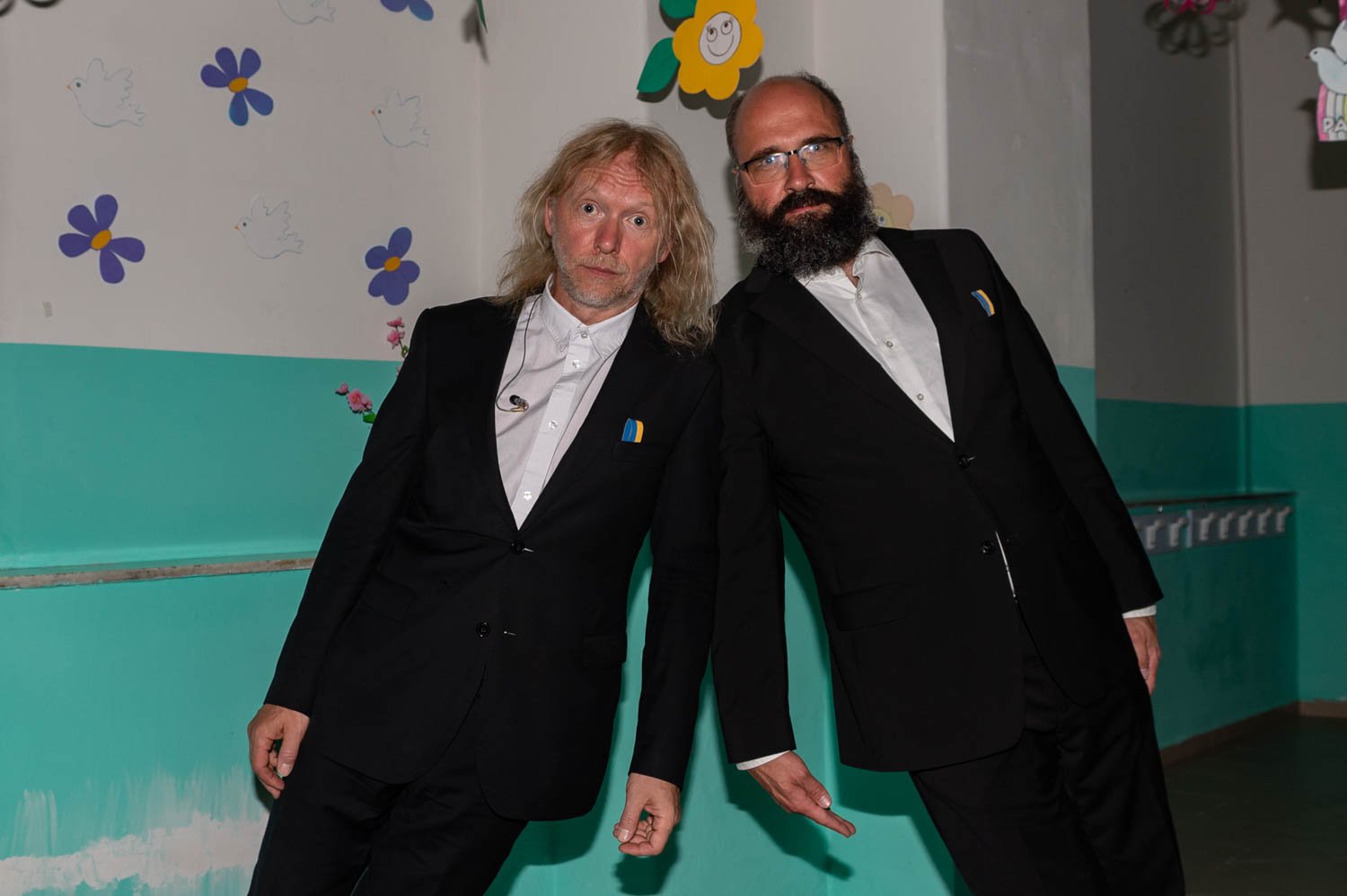Dust down your talharpas and lace up your cross-country ski boots, because today we have a guest as impressive as Estonia’s wind turbines and as established as its agriculture. We are talking about Puuluup, the Baltic musical sensation who recently took to the stage at Ariano Folk Festival in Ariano Irpino in Italy. Comprising two exceptionally gifted enthusiasts of the talharpa, a traditional Estonian instrument which almost went extinct—Ramo Teder and Marko Veisson—Puuluup had the crowd in stitches with their zany fusion of traditional Estonian folk music, a dose of modern electronic wizardry, unexpected social choreography expertise, and comedy chops that could make even a seasoned stand-up comedian envious.
As this marked the duo’s grand Italian premiere, we kicked off the interview by exploring Marko’s impressions of the surroundings, “Of course, we are excited about being here. So far it has been very good, it’s a very beautiful place, and let’s see what’s going to happen this evening…”

As we delved deeper into Puuluup’s approach to engaging diverse audiences, Marko’s insights shed light on their commitment to breaking down cultural barriers through their music. “Connecting with audiences from different backgrounds is always a challenge, we’ve developed various strategies to tackle this challenge, constantly evolving our approach to suit each unique situation“.
This adaptability is a hallmark of their performances, which are not merely musical showcases but immersive experiences that evolve with each show. Marko explained, “We’ve been performing together for nine years, and with each performance, we gain new insights and refine our craft. There is always room for improvisation, which keeps things fresh. The nature of our performance depends on the venue and the audience. In more intimate settings, we can engage in longer dialogues with the audience. However, language barriers can sometimes pose challenges, limiting our verbal interactions. In such cases, we resort to non-verbal communication and may even learn a few phrases in the local language to connect with the audience on a deeper level“.
Their rise to prominence and international acclaim wasn’t always a foregone conclusion. Marko reflected on their journey, saying, “When we began, Puuluup was more of a hobby. We simply enjoyed making music and exploring the possibilities of our traditional Estonian talharpa. However, over time, we started receiving more and more gig offers, and the interest in our music grew. It has been an incredible journey“.
Despite their international success, Puuluup approaches their role as Estonia’s musical ambassadors with great dedication. Marko shared his perspective, saying, “Estonia is a small country, so it’s like every Estonian who ventures abroad becomes an ambassador in some way. So, of course it’s a huge responsibility. We are fortunate that Estonian music enjoys a strong reputation, thanks to talented musicians like Duo Ruut, Trad.Attack!, Maarja Nuut, Mari Kalkun, and others, not to mention the renowned composer Arvo Pärt in classical music. So there are very big names, and we are just surprised and of course happy and excited that we are part of this Estonian music export“.
The conversation naturally led to the reasons behind Estonia’s strong connection to folk and traditional music. “The resurgence of folk and traditional music in Estonia can be attributed to a combination of factors. It was partly coincidental but also a result of specific choices made in the early and mid-1990s. During the 90s, in the post-independence era of Estonia, there was a renewed interest in preserving and celebrating our cultural heritage. We have extensive archives dating back to the 19th century, containing a wealth of Estonian folklore, including music, songs, and traditional instruments. This tradition of exploring our roots has always existed, when we regained our independence, there was a compelling urge to rediscover our identity and express it in a modern way. This also led to the creation of events like the Viljandi Folk Music Festival and a broader cultural movement focused on folk music. Estonians have always had a deep connection to their roots, and this period of self-discovery provided an opportunity to reinterpret our traditions in a modern context“.
Our discussion then shifted to the remarkable enthusiasm of young people for Puuluup’s music, particularly witnessed during the Tallinn Music Week back in April. Marko shared his observations, saying, “Indeed, the youth in Estonia have embraced folk music. When you attend a folk music event in Estonia, you’ll find attendees from all age groups, including teenagers. That’s why folk musicians are also engaging in numerous collaborations with other musicians, and folk music is played on both national and private radio stations. Additionally, there have been some highly successful folk musicians and groups in Estonia, such as Curly Strings and Trad.Attack!“.
We also explored the delicate balance Puuluup strikes between tradition and innovation, a theme that resonates deeply with their music. Marko elucidated, “That’s the thing. One aspect is that the tradition of playing the talharpa, our instrument, was basically dead, with nobody playing it. So, there’s nobody who can claim that we’re playing it incorrectly. Naturally, there are purists who may critique our music as not traditional enough. While Estonian institutions take a quite liberal stance, there are individuals who take the preservation of tradition very seriously. I personally believe it’s beneficial to have these dedicated researchers who aim to understand the historical tradition of singing and playing the instrument. Then there are others like us who use this information but also add our own unique elements to popularise the instrument. It’s crucial not to mix these approaches or give the impression that the sound we create with the instrument is the original authentic sound. Instead, we use the authentic sound as a foundation while incorporating electronics, looping, and various effects. What emerges is a fusion, a dialogue between tradition, its roots, and our interpretation“.
Looking ahead, Marko shared Puuluup’s future plans with excitement. He outlined their upcoming schedule, saying, “We have a busy calendar ahead. Following our performance here, we will be heading to Poland for another festival. Then, summer is not over yet as we have several performances lined up in Estonia. And then again traveling in September and October. We are also excited to be performing at WOMEX in A Coruña in October. And, of course, we hope to return to Italy and the UK in the near future”
As our interview was wrapping up, we asked Marko the challenging question of how he would describe Puuluup’s music to someone who had never heard it. After a moment of contemplation, he responded in a very Puuluup-esque manner, “I understand that it is very crucial and important to be able to describe your own music in one sentence. I really can’t do it still. It’s so difficult. It depends very much on the background of the listener. So, we say it’s zombie-folk or neo-zombie post-folk because the tradition of playing this instrument was dead for a while and now it’s living. We use a traditional instrument, but everything around it is quite modern, and there are influences from very different music styles and even some very different cultural areas. Of course, you can find some Estonian or Nordic attitude behind it, but let’s say there are a lot of contrasts. Like we play in a very serious suit, but everything else is not so serious“.
Photos © Gaetano Piazzolla


